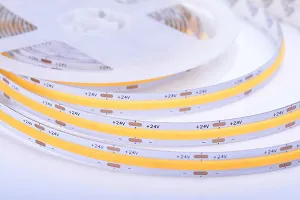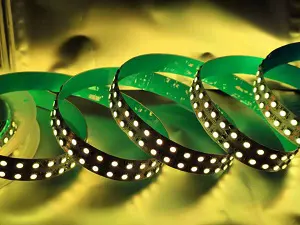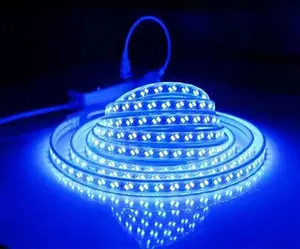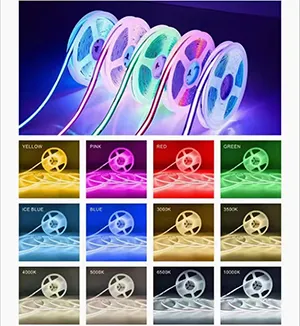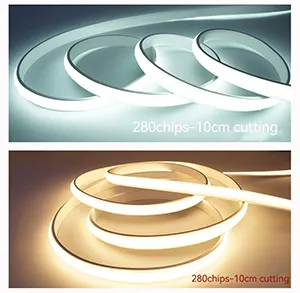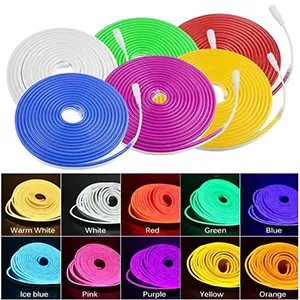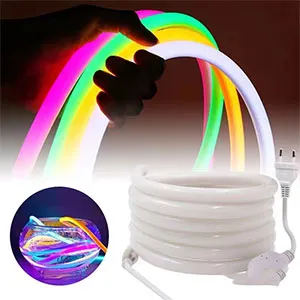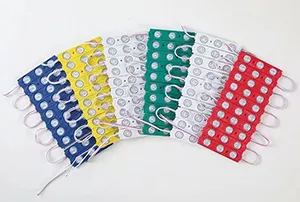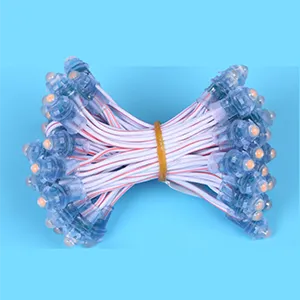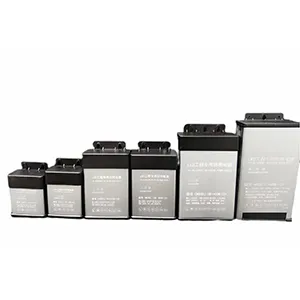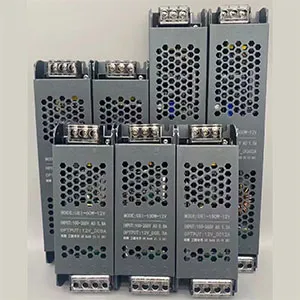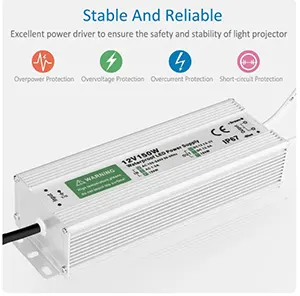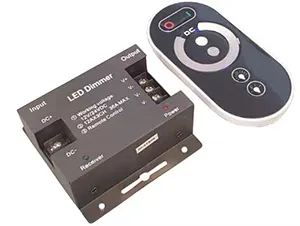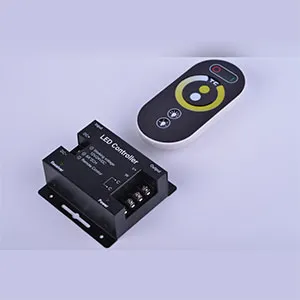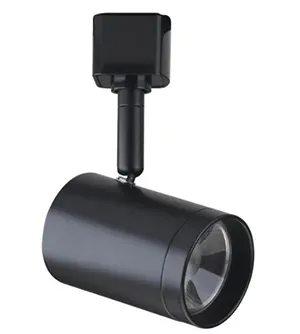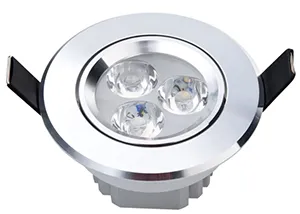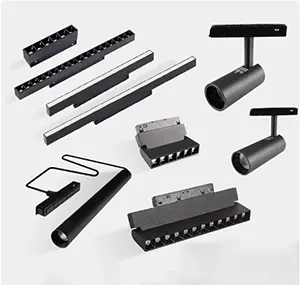How to safely install LED light strips
1. Check the strip light: First, determine the length to be installed, and then take the integer. This kind of strip light is a unit of 1 meter. Only by cutting it from the cut will it not affect the circuit. If it is cut at will, it will cause one unit to not light up. For example: if a length of 7.5 meters is required, the strip light should be cut to 8 meters
2. Connecting plug: LED itself is a diode, driven by direct current, so it has positive and negative poles. If the positive and negative poles are reversed, it is in an insulated state and the strip light will not light up. If the connecting plug is powered on and does not light up, just disassemble the other end of the strip light.
3. Placement of the strip light: The strip light is packaged in a coil. The newly unpacked strip light will be twisted and difficult to install. You can first sort it out and then put it in the light trough. Since the strip light is single-sided, if it is not placed flat, uneven brightness will appear, especially at the corners.
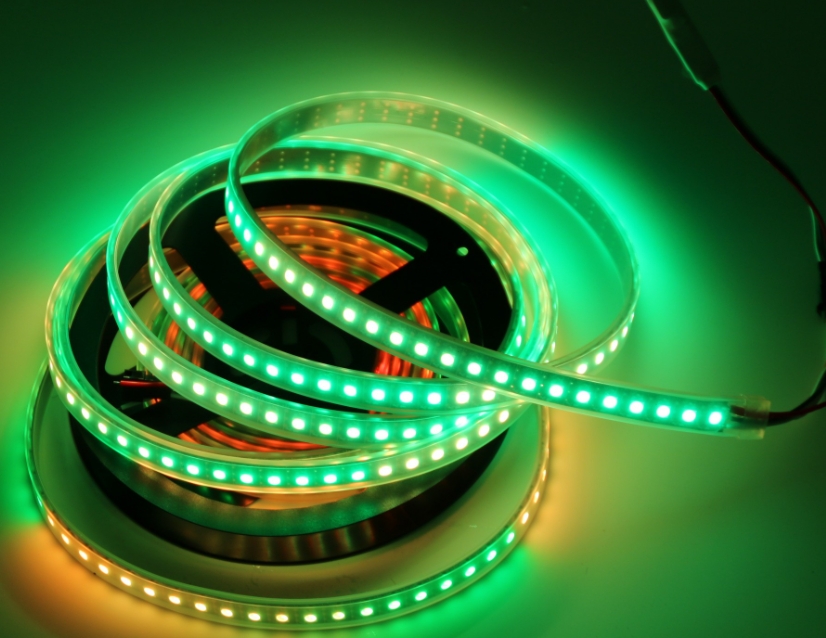
How to install LED strip lights
1. Indoor installation: When LED strip lights are used for interior decoration, they are very simple to install because they do not have to withstand wind and rain. Take the LED strip light produced by Guanghong Electronics as an example. Each LED strip light has a self-adhesive 3m double-sided tape on the back. When installing, you can directly tear off the sticker on the surface of the 3m double-sided tape, and then fix the strip light where it needs to be installed, and press it flat with your hands.
2. Outdoor installation: Outdoor installation will be exposed to wind and rain. If 3m glue is used for fixing, the 3m glue will become less sticky over time, causing the LED strip light to fall off. Therefore, outdoor installation often uses the card slot fixing method. The places that need to be cut and connected are the same as indoor installation, but waterproof glue is required to consolidate the waterproof effect of the connection point.
3. Power connection method: The general voltage of the LED strip light is DC 12v, so it needs to be powered by a switching power supply. The size of the power supply is determined according to the power and connection length of the LED strip light. If you do not want each LED strip light to be controlled by a power supply, you can buy a relatively large power switching power supply as the main power supply, and then connect all the input power supplies of the LED strip lights in parallel (if the wire size is not enough, it can be extended separately), and the main switching power supply is used for power supply. The advantage of this is that it can be controlled centrally, but the inconvenience is that it cannot realize the lighting effect and switch control of a single LED strip light. You can decide which method to use.
4. Controller connection method: LED marquee strip lights and RGB full-color strip lights require a controller to achieve the changing effect, and the control distance of each controller is different. Generally speaking, the control distance of a simple controller is 10 to 15 meters, and the control distance of a remote controller is 15 to 20 meters. The longest distance can be controlled is 30 meters. If the connection distance of the LED strip light is long and the controller cannot control such a long strip light, then a power amplifier is needed for tapping.
Notes on LED strip light installation:
(1) Do not power on the LED strip light when the whole roll of LED strip light is not removed from the packaging or piled up;
(2) When the LED strip light needs to be cut according to the length of the on-site installation, it can only be cut at the place with the scissors mark, otherwise one of the units will not light up. Generally, the length of each unit is 1.5-2 meters;
(3) When connecting the power supply or connecting two sections of the strip light in series, first bend the head of the colorful lamp to the left and right to expose the wires in the strip light. About 2-3mm, use pliers to cut cleanly without burrs, and then use male pins to connect to avoid short circuit;
(4) Only LED colorful strip lights with the same specifications and voltage can be connected in series, and the total length of the series connection cannot exceed the maximum permitted length;
(5) When LED strip lights are connected in series, each section should be tested to light up in order to promptly find out whether the positive and negative poles are connected incorrectly and whether the light emission direction of each section of the strip light is consistent; 6) The end of the strip light must be covered with a PVC tail plug, tied with a clamp, and then sealed around the interface with neutral glass glue to ensure safety. 7) Because LED has unidirectional conductivity, if a power cord with an AC/DC converter is used, it should be powered on after the power connection is completed to confirm that the positive and negative poles are connected correctly before it is put into use.





